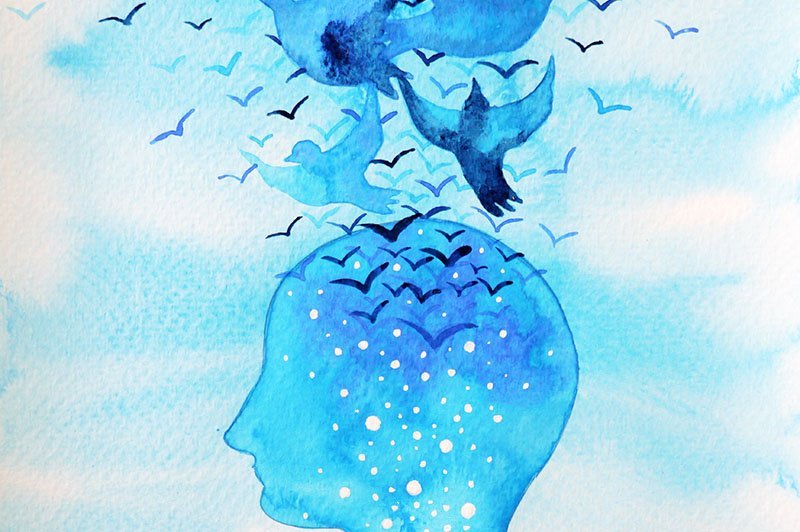In today’s fast-paced world, stress and panic have become all too common, affecting our mental health and overall well-being. The demands of daily life, work, and personal challenges can often feel overwhelming. Fortunately, there are effective techniques to manage these emotions and promote mental health. One such technique is guided imagery, a psychological tool that harnesses the power of the mind to soothe stress and alleviate panic. In this article, we will delve into what guided imagery is, how it engages the mind, the crucial role of the senses in the process, and provide a real-life example of how it can help overcome difficult situations. We will also outline the steps to try guided imagery, emphasizing its relevance in mental health and psychology assessment.
What Is Guided Imagery?
Guided imagery is a therapeutic technique that involves using one’s imagination to create a calming and positive mental experience. It is a form of focused meditation that encourages individuals to engage their minds in a way that promotes relaxation and stress reduction. Guided imagery is often facilitated by a trained psychologist or therapist but can also be practiced independently.
Engaging the Mind with Guided Imagery
The core of guided imagery lies in engaging the mind in a deliberate and structured manner. To effectively employ this technique, one must:
Find a Quiet Space:
Start by finding a peaceful and quiet environment where you can sit or lie down comfortably. Reducing external distractions is crucial to fostering a calm mental space.
Close Your Eyes:
Closing your eyes can help you better visualize the imagery, shutting out external stimuli and focusing your attention inward.
Deep Breathing:
Begin with deep, slow breaths to relax your body and prepare your mind for the imagery exercise. Inhale deeply through your nose, hold for a moment, and exhale slowly through your mouth.
Create a Mental Image:
With your eyes closed and body relaxed, create a mental image of a peaceful and serene place. This could be a beach, a forest, a garden, or any place where you feel safe and at ease.
Engage All Senses:
Bring your chosen place to life by engaging all your senses. Imagine the sound of waves crashing, the scent of flowers in the air, the warmth of the sun on your skin, and the taste of the salty sea breeze. The more vividly you can engage your senses, the more immersive the experience will be.
The Role of Engaging Senses in Guided Imagery
Engaging the senses is a fundamental aspect of guided imagery. This multisensory approach taps into the mind’s ability to respond to sensory input, thereby triggering relaxation responses and reducing stress. When we vividly imagine sensory experiences, our brain responds as if those experiences are real, releasing calming neurotransmitters and reducing the production of stress hormones.
For example, envisioning a calm beach and feeling the warmth of the sun on your skin can trigger the release of endorphins, the body’s natural feel-good chemicals. Similarly, imagining the soothing sound of ocean waves can lower cortisol levels, a hormone associated with stress. Engaging the senses in guided imagery is like providing the mind with a mental vacation, offering a respite from the demands and pressures of daily life.
A Real-Life Example of Guided Imagery in Action
To illustrate the power of guided imagery, let’s consider a real-life scenario where panic and stress threatened to overwhelm an individual. Imagine being in a difficult and frightening situation, such as a turbulent flight during a thunderstorm. The combination of turbulence and stormy weather can trigger intense anxiety and panic for many people.
In this scenario, guided imagery can come to the rescue. While strapped into your seat and feeling the turbulence, you decide to employ this technique:
You close your eyes and take slow, deep breaths, calming your racing heart.
You create a mental image of a peaceful place, such as a tranquil mountain cabin surrounded by a serene forest.
Engaging your senses, you imagine the scent of pine trees, the cool breeze on your skin, and the soft rustling of leaves.
You picture yourself walking through the forest, feeling safe and protected.
As you continue to focus on this imagery, your anxiety begins to dissipate. Your body responds to the calming mental experience, and your panic subsides.
By using guided imagery, you were able to manage your panic and stress during the flight, ultimately arriving at your destination feeling more relaxed and in control.
Steps to Try Guided Imagery
Now that we understand the benefits of guided imagery, let’s outline the steps to try this technique on your own:
Set Aside Time:
Dedicate a specific time for your guided imagery practice. This could be in the morning to start your day with a calm mind or in the evening to unwind before sleep.
Find a Comfortable Space:
Locate a quiet and comfortable space where you won’t be disturbed during your practice.
Choose a Focus:
Decide on the focus of your imagery. It could be a serene natural setting, a place from your past where you felt safe, or any scenario that promotes relaxation.
Engage Your Senses:
As discussed earlier, vividly engage your senses in your chosen imagery. Feel, see, hear, smell, and even taste the elements of your mental scene.
Practice Regularly:
Like any skill, guided imagery improves with practice. Consistency is key to reaping the long-term benefits for your mental health.
Conclusion
By engaging the mind and tapping into the senses, individuals can create mental experiences that induce relaxation and calmness. As demonstrated in our real-life example, guided imagery can be a lifeline during challenging situations, helping individuals regain control and composure.
Whether practiced independently or with the guidance of a trained professional, it offers a path to serenity and mental well-being, enabling individuals to navigate the complexities of life with greater resilience and peace of mind.

